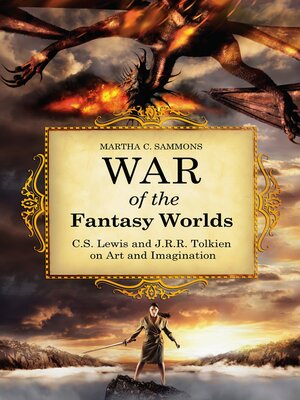War of the Fantasy Worlds
ebook ∣ C.S. Lewis and J.R.R. Tolkien on Art and Imagination
By Martha C. Sammons

Sign up to save your library
With an OverDrive account, you can save your favorite libraries for at-a-glance information about availability. Find out more about OverDrive accounts.
Find this title in Libby, the library reading app by OverDrive.



Search for a digital library with this title
Title found at these libraries:
| Library Name | Distance |
|---|---|
| Loading... |
This investigation focuses on C.S. Lewis's and J.R.R. Tolkien's contrasting views of art and imagination, which are key to understanding and interpreting their fantasy works, providing insight into their goals, themes, and techniques, as well as an appreciation of the value and impact of their mythologies.
Most scholarship about J.R.R. Tolkien and C. S. Lewis describes their shared faith and academic interests or analyzes each writer's fantasy works. War of the Fantasy Worlds: C.S. Lewis and J.R.R. Tolkien on Art and Imagination is the first to focus solely on their contrasting concepts of fantasy. The authors' views of art and imagination, the book shows, are not only central to understanding the themes, value, and relevance of their fantasy fiction, but are also strikingly different.
Understanding the authors' thoughts about fantasy helps us better understand and appreciate their works. Yet, this book is not a critical analysis of The Lord of the Rings or The Chronicles of Narnia. Rather, it examines only elements of Tolkien's and Lewis's books that relate to their views about art, fantasy, and creativity, or the implementation of their theories. The result is a unique and altogether fascinating perspective on two of the most revered fantasy authors of all time.
Most scholarship about J.R.R. Tolkien and C. S. Lewis describes their shared faith and academic interests or analyzes each writer's fantasy works. War of the Fantasy Worlds: C.S. Lewis and J.R.R. Tolkien on Art and Imagination is the first to focus solely on their contrasting concepts of fantasy. The authors' views of art and imagination, the book shows, are not only central to understanding the themes, value, and relevance of their fantasy fiction, but are also strikingly different.
Understanding the authors' thoughts about fantasy helps us better understand and appreciate their works. Yet, this book is not a critical analysis of The Lord of the Rings or The Chronicles of Narnia. Rather, it examines only elements of Tolkien's and Lewis's books that relate to their views about art, fantasy, and creativity, or the implementation of their theories. The result is a unique and altogether fascinating perspective on two of the most revered fantasy authors of all time.







